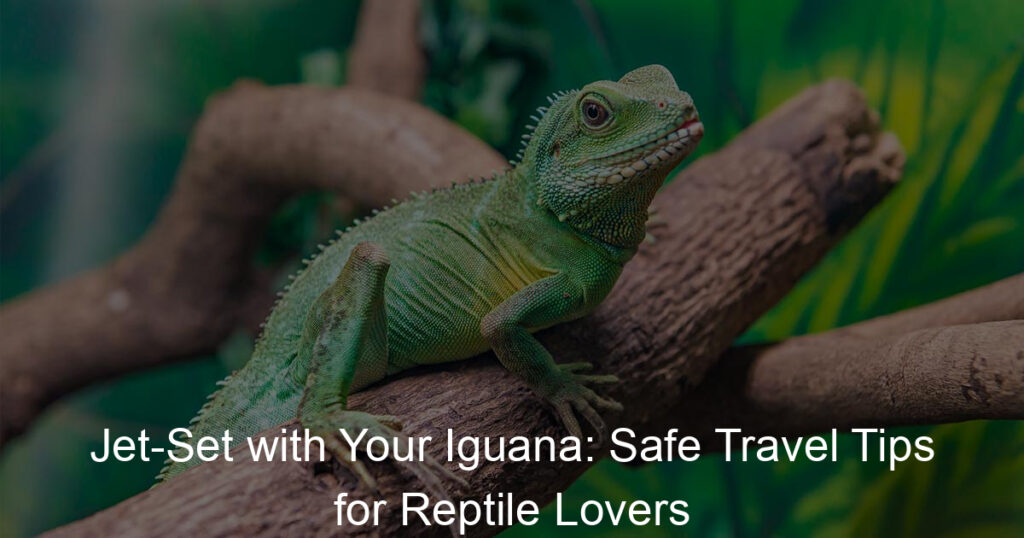
Introduction to Blue Iguana Behavior
Blue Iguanas are fascinating creatures with unique behaviors that set them apart from other reptiles. Understanding these behaviors can help us appreciate these creatures more and debunk some common misconceptions about them.
- Understanding the basics of Blue Iguana behavior
- Common misconceptions about Blue Iguana behavior
Blue Iguanas, like other reptiles, are ectothermic, meaning they rely on their environment to regulate their body temperature. They often bask in the sun during the day to warm up and become more active. At night, they retreat to burrows or rock crevices to conserve heat.
These iguanas are primarily herbivores, feeding on a wide variety of plants, fruits, and flowers. They have a slow metabolism, which allows them to go for long periods without food. However, during the breeding season, they become more active and eat more to gain energy for mating.
Blue Iguanas are solitary creatures and are known to be territorial, especially males. They use a variety of signals, such as head bobbing and dewlap extension, to communicate with each other and establish dominance.
One common misconception is that Blue Iguanas are aggressive creatures. While they can be territorial, they are generally not aggressive unless provoked or threatened. They prefer to avoid conflict and will often retreat if given the chance.
Another misconception is that these iguanas are lazy due to their slow movements. However, this is a result of their slow metabolism and the need to conserve energy. In fact, they can be quite active, especially during the breeding season.
Lastly, some people believe that Blue Iguanas are antisocial. While they are solitary creatures, they do interact with each other, especially during the breeding season. They have a complex social structure and use a variety of signals to communicate with each other.
Blue Iguana Social Habits
Blue Iguanas, like many other reptiles, have unique social habits that are fascinating to observe and understand. Let’s delve into their social behavior and interactions.
Understanding Blue Iguana Social Behavior
Blue Iguanas are not just beautiful creatures; they also have an intriguing social life. To fully appreciate these reptiles, we need to understand how they interact with each other and the role of dominance in their social interactions.
- How Blue Iguanas interact with each other
- The role of dominance in Blue Iguana social interactions
Blue Iguanas are known to be solitary animals, but they do interact with each other during mating season or when competing for territory. They communicate using body language, like bobbing their heads or puffing up their bodies. They also use visual signals, such as changing their skin color to show their mood or intentions.
Dominance plays a significant role in Blue Iguana social interactions. The dominant male, often the largest and most aggressive, controls the best territory and has the best access to females during the mating season. Dominant males show their status through aggressive displays and fights. Submissive males, on the other hand, try to avoid conflict and often have less access to resources and mates.
In summary, Blue Iguanas are solitary but social creatures. They interact with each other through body language and visual signals, and dominance plays a crucial role in their social interactions. Understanding these behaviors can help us better appreciate these fascinating creatures.
Blue Iguana Behavior Secrets
Blue Iguanas are fascinating creatures with unique social behaviors that set them apart from other reptiles. Let’s delve into some of these intriguing secrets.
- Unusual social habits of Blue Iguanas
- How Blue Iguanas communicate with each other
Blue Iguanas are known for their solitary nature. Unlike many other reptiles, they prefer to live alone, marking and defending their territory fiercely. However, during the breeding season, they exhibit a different behavior. Males will actively seek out females and display a series of head bobs and dewlap extensions to attract them. This shift from solitary to social during specific times of the year is one of the unusual habits of Blue Iguanas.
Communication among Blue Iguanas is primarily visual. They use a variety of body language signals to communicate with each other. For instance, a series of rapid head bobs can indicate dominance or a challenge to other males. On the other hand, slow head bobs can be a sign of submission. They also use their brightly colored dewlaps, the loose skin under their throats, to communicate. Extending the dewlap can be a sign of attraction during the breeding season, or a warning signal to intruders.
Understanding these behavior secrets of Blue Iguanas can provide us with a deeper appreciation of these unique and fascinating creatures. It also highlights the complex social structures and communication methods in the animal kingdom.
Social Secrets in Reptiles: A Comparative Study
Let’s dive into the fascinating world of reptiles and explore the social behaviors of the Blue Iguana in comparison to other reptiles. This will give us a better understanding of how these creatures interact within their species and with others.
Comparing Blue Iguana Behavior with Other Reptiles
Blue Iguanas, like other reptiles, have unique social behaviors. But how do they compare? Let’s find out.
- Similarities in social behavior between Blue Iguanas and other reptiles
- Differences in social behavior between Blue Iguanas and other reptiles
Blue Iguanas, like many reptiles, are solitary creatures. They prefer to spend most of their time alone, except during the breeding season. This is a common trait among reptiles such as snakes, turtles, and lizards. Blue Iguanas also communicate through visual signals, another common feature among reptiles.
While there are similarities, there are also significant differences in the social behavior of Blue Iguanas compared to other reptiles. For instance, Blue Iguanas are known to be more territorial than many other reptiles. They establish and defend their territories fiercely. Additionally, while many reptiles lay their eggs and leave, Blue Iguanas often stay close to their nests, showcasing a higher level of parental care.
In conclusion, while Blue Iguanas share some common social behaviors with other reptiles, they also have unique traits that set them apart. Understanding these behaviors can help us appreciate these fascinating creatures even more.
| Reptile | Common Social Behavior | Unique Social Behavior |
|---|---|---|
| Blue Iguana | Solitary, Communicates through visual signals | Highly territorial, Stays close to nests |
| Other Reptiles (e.g., Snakes, Turtles) | Solitary, Communicates through visual signals | Varies by species |
Case Studies: Observing Blue Iguana Social Interactions in the Wild
Let’s take a closer look at how Blue Iguanas interact with each other and their environment. We’ll explore two different case studies that offer fascinating insights into their social behavior.
- Case Study 1: Observing a group of Blue Iguanas in their natural habitat
In this study, researchers spent several months observing a group of Blue Iguanas in their natural habitat. They found that these creatures have a complex social structure. Blue Iguanas often live in groups, and they use a variety of signals to communicate with each other. For example, they bob their heads to show dominance and flick their tails to signal danger.
Interestingly, the researchers also noticed that the Blue Iguanas have a unique way of resolving conflicts. Instead of fighting, they engage in a sort of ‘dance-off’, where they display their bright blue colors and bob their heads. The Iguana with the most impressive display is usually the winner, and the conflict is resolved without any physical harm.
- Case Study 2: The impact of human interaction on Blue Iguana social behavior
In the second study, researchers looked at how human interaction affects the social behavior of Blue Iguanas. They found that human presence can significantly alter their behavior. When humans are around, Blue Iguanas tend to be more cautious and less social. They spend more time hiding and less time interacting with each other.
However, the researchers also found that Blue Iguanas can adapt to human presence over time. In areas where humans regularly visit, the Iguanas were less fearful and more likely to engage in their normal social behaviors. This shows the resilience and adaptability of these amazing creatures.
These case studies provide valuable insights into the social behavior of Blue Iguanas. They show us that these creatures are not only beautiful but also highly intelligent and complex. Understanding their behavior can help us protect them and their habitats.
Key Takeaways: Understanding the Social Life of Blue Iguanas
As we delve into the world of Blue Iguanas, we find that their social life is a fascinating aspect of their behavior. It’s not just about their vibrant color or their unique habitats, but also about how they interact with each other. Let’s take a look at the key takeaways from our exploration of the social life of Blue Iguanas.
- Importance of Social Interactions in Blue Iguana Behavior
- How Understanding Blue Iguana Social Behavior Can Aid in Their Conservation
Blue Iguanas are not solitary creatures. They thrive in groups and their social interactions play a significant role in their daily lives. From finding food to protecting their territory, these interactions are crucial. For example, during the mating season, male Blue Iguanas perform a series of head bobs and push-ups to attract females. This is a clear demonstration of how their social behavior impacts their survival and reproduction.
Understanding the social behavior of Blue Iguanas can greatly aid in their conservation efforts. By observing their social interactions, we can gain insights into their needs and preferences. This knowledge can help us create more effective conservation strategies. For instance, knowing that Blue Iguanas prefer to live in groups can guide us in designing their habitats in captivity. It can also help us understand how to reintroduce them into the wild more successfully.
In conclusion, the social life of Blue Iguanas is a captivating subject that offers valuable insights into their behavior and survival. By understanding their social interactions, we can contribute to their conservation and ensure their survival for future generations.
Conclusion: The Fascinating Insight into the Social Behavior of Blue Iguanas
In this article, we have embarked on a thrilling journey into the world of Blue Iguanas, exploring their unique social behaviors and habits. We have discovered that these intriguing reptiles are not just solitary creatures, but have a complex social structure that is fascinating to observe and study.
- Recap of the social secrets revealed in the study of Blue Iguana behavior: Our journey began with an introduction to the Blue Iguana’s behavior, highlighting their unique social habits. We then delved deeper into the social secrets of these reptiles, comparing them with other species. Our observations in the wild provided us with real-life examples of how these creatures interact with each other. We discovered that Blue Iguanas have a hierarchical social structure, communicate through body language, and even display signs of cooperation and conflict resolution.
- Future prospects for further research into Blue Iguana social habits: The study of Blue Iguana social behavior is a field ripe for further exploration. Future research could delve into the impact of environmental changes on their social structure, or investigate the role of communication in their social interactions. There is also potential to explore the impact of these social behaviors on the overall survival and adaptation of Blue Iguanas in the wild. The possibilities are endless, and the insights gained could not only enrich our understanding of these fascinating creatures but also contribute to their conservation efforts.
In conclusion, the social behavior of Blue Iguanas is a captivating subject that offers a wealth of knowledge and insights. As we continue to study and understand these creatures, we are reminded of the intricate and diverse nature of life on our planet. The world of Blue Iguanas is a testament to the fascinating complexity of social behaviors in the animal kingdom.














